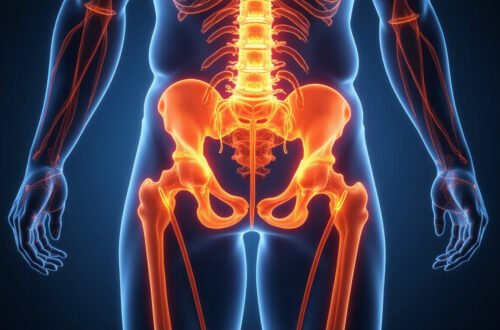Sciatica risk is a concern for many individuals, especially those experiencing lower back pain or leg discomfort. Sciatica, characterized by pain radiating along the sciatic nerve—running from the lower back down to the legs—is a common condition that can significantly impact daily life. Understanding the factors that contribute to sciatica risk and knowing how to prevent it are essential steps toward maintaining spinal health and overall well-being.
In this article, we’ll explore the key sciatica risk factors and provide practical prevention strategies to help you stay healthy and pain-free.
What Is Sciatica and Why Is It Important to Understand Its Risk Factors?
Sciatica results from irritation or compression of the sciatic nerve, which is the longest nerve in the body. This nerve can become pinched or inflamed due to various causes, leading to symptoms like sharp pain, numbness, tingling, and muscle weakness in the affected leg.
Recognizing sciatica risk factors is vital because it allows for early intervention, lifestyle modifications, and preventive measures. By addressing these factors proactively, you can reduce the likelihood of developing severe sciatic pain and its associated complications.
Common Sciatica Risk Factors
Understanding what increases your likelihood of developing sciatica is crucial. While some risk factors are beyond control, such as age or genetics, many are modifiable through lifestyle changes and medical attention.
1. Age-Related Degeneration
As we age, the vertebral discs and spinal structures naturally degenerate, increasing the probability of disc herniation or spinal stenosis—all of which can irritate the sciatic nerve.
2. Herniated or Bulging Discs
A herniated disc is one of the top causes of sciatica. Disc herniation occurs when the soft inner material pushes through the tough outer layer, pressing on nearby nerve roots. This condition is often linked to age, injury, or improper lifting techniques.
3. Spinal Stenosis
This condition involves narrowing of the spinal canal, which can compress the sciatic nerve roots. It commonly occurs in older adults due to degenerative changes.
4. Poor Posture and Ergonomics
Maintaining poor posture—such as slouching or sitting for extended periods—can put strain on the lower back and spine, increasing sciatica risk over time.

5. Sedentary Lifestyle
Lack of physical activity leads to weak core muscles, which are vital for supporting the spine. Weakness here can cause poor spinal alignment and increased nerve compression risk.
6. Obesity
Excess body weight increases pressure on the lower back and spine, elevating the likelihood of disc herniation and nerve irritation.
7. Work-Related Factors
Jobs that require heavy lifting, prolonged sitting, or repetitive twisting and bending can heighten sciatica risk.
8. Smoking
Smoking reduces blood flow to spinal tissues, impairing healing and increasing degeneration, which can contribute to sciatica development.
How to Reduce Your Sciatica Risk: Prevention Strategies
Prevention is always better than cure, especially with conditions like sciatica. Here are effective strategies to lower your sciatica risk:
1. Maintain a Healthy Weight
Reducing excess weight alleviates pressure on the lumbar spine and improves overall health. Incorporate a balanced diet and regular exercise to keep your weight in check.
2. Strengthen Your Core
Core muscles support your spine and help maintain proper alignment. Engage in exercises like planks, bridges, and pelvic tilts to build core strength.
3. Practice Good Posture
Be mindful of your posture during daily activities:
- Sit with your back against the chair.
- Keep feet flat on the ground.
- Avoid slouching or craning your neck forward.
Using ergonomic furniture and adjustable desks can make a significant difference.
4. Exercise Regularly
Routine physical activity keeps the spine healthy and flexible. Incorporate low-impact exercises such as swimming, walking, or yoga.
5. Lift Properly
When lifting heavy objects:
- Bend at the hips and knees.
- Keep your back straight.
- Lift with your legs, not your back.
- Avoid twisting your body during the lift.
This reduces strain and injury risk.
6. Stop Smoking
Quitting smoking improves blood circulation and promotes spinal tissue healing, thereby reducing sciatica risk.
7. Seek Medical Advice Early
If you experience persistent back pain or numbness in your legs, consult a healthcare professional promptly. Early diagnosis and treatment can prevent the progression of sciatica.
Lifestyle Tips to Keep Your Spine Healthy
In addition to targeted exercises and ergonomic practices, consider these general lifestyle tips:
- Stay hydrated to maintain disc health.
- Avoid prolonged periods of sitting; take short breaks to stretch.
- Use supportive shoes to reduce uneven spinal pressure.
- Manage stress through relaxation techniques, as tension can affect muscle health.
FAQs About Sciatica Risk and Prevention
Q1: What are the main sciatica risk factors I should watch out for?
A1: The primary risk factors include age-related degeneration, herniated discs, poor posture, sedentary lifestyle, obesity, smoking, and occupational hazards.
Q2: Can lifestyle changes really prevent sciatica?
A2: Yes, adopting healthy habits like regular exercise, maintaining good posture, and avoiding smoking can significantly lower sciatica risk.
Q3: How early can I intervene to prevent severe sciatic pain?
A3: Early symptoms like lower back discomfort or tingling should prompt medical consultation to facilitate early intervention and prevent worsening.
The Importance of Consulting Professionals
While lifestyle modifications are vital, consulting healthcare providers—including physical therapists or orthopedic specialists—is crucial for a tailored prevention plan. They can recommend specific exercises, ergonomic assessments, and treatments suited to your needs.
Conclusion: Take Action to Minimize Your Sciatica Risk Today
Understanding sciatica risk factors empowers you to take control of your spinal health. Whether it’s maintaining a healthy weight, practicing good posture, or engaging in core-strengthening exercises, proactive steps can significantly reduce your likelihood of developing debilitating sciatic pain. Don’t wait for symptoms to worsen—start implementing these preventive strategies today to enjoy a healthier, more comfortable life.
Take charge of your health now. Consult with healthcare professionals, adopt healthier habits, and keep your spine strong and resilient. Your back—and legs—will thank you!






